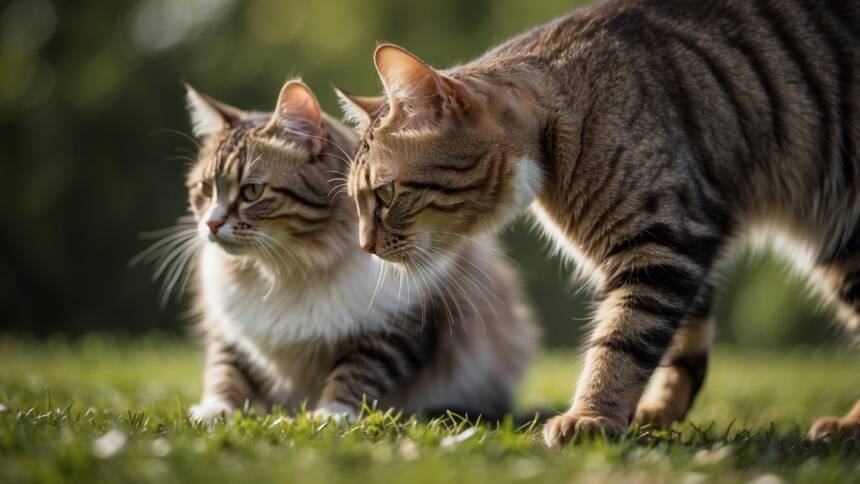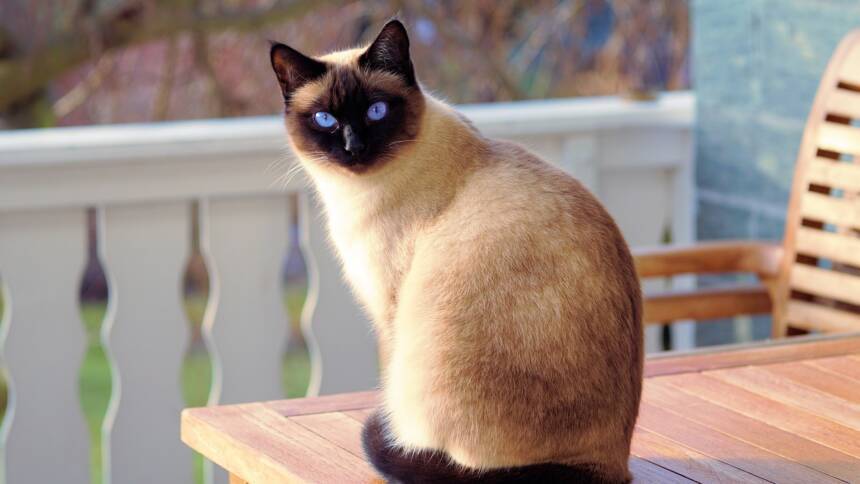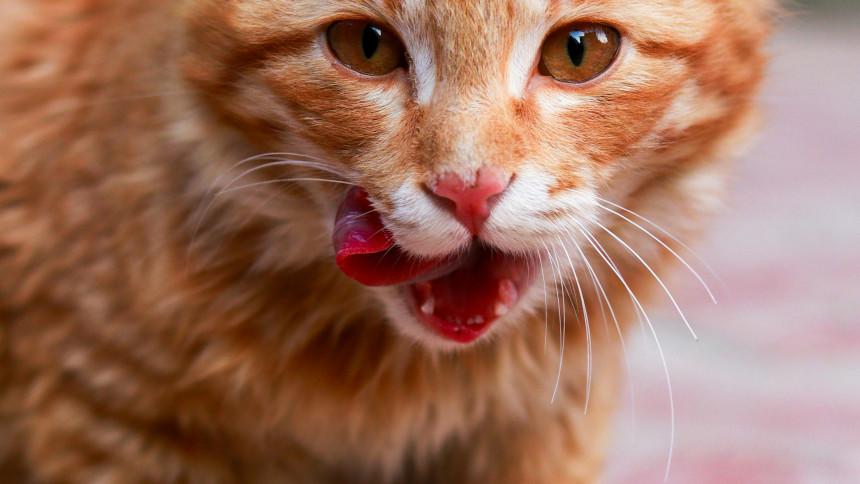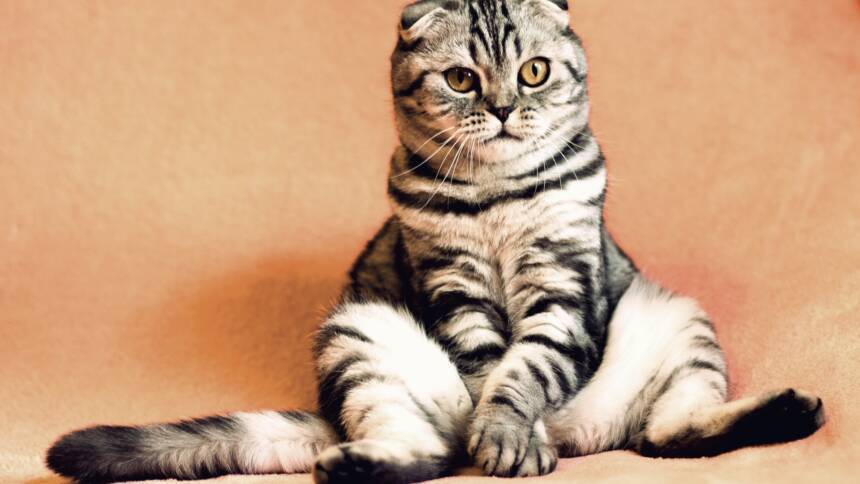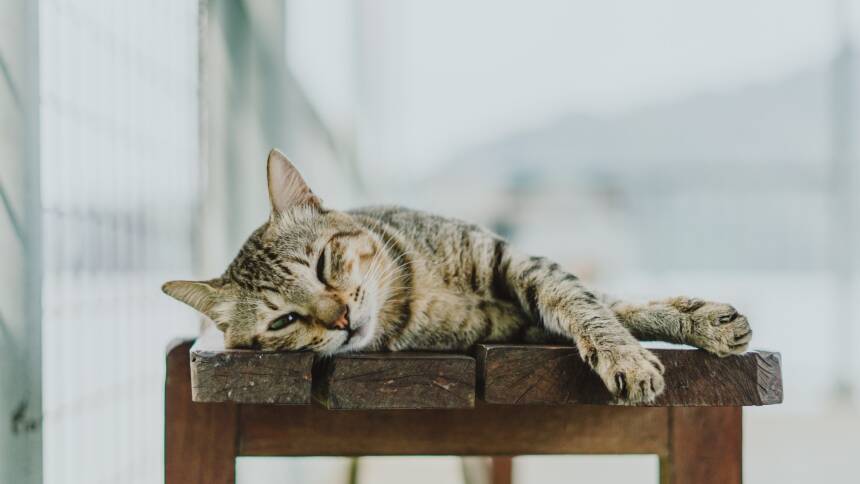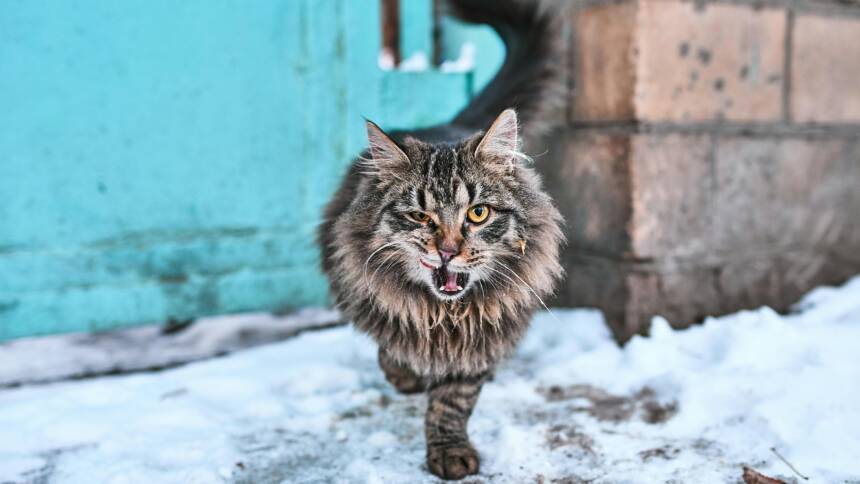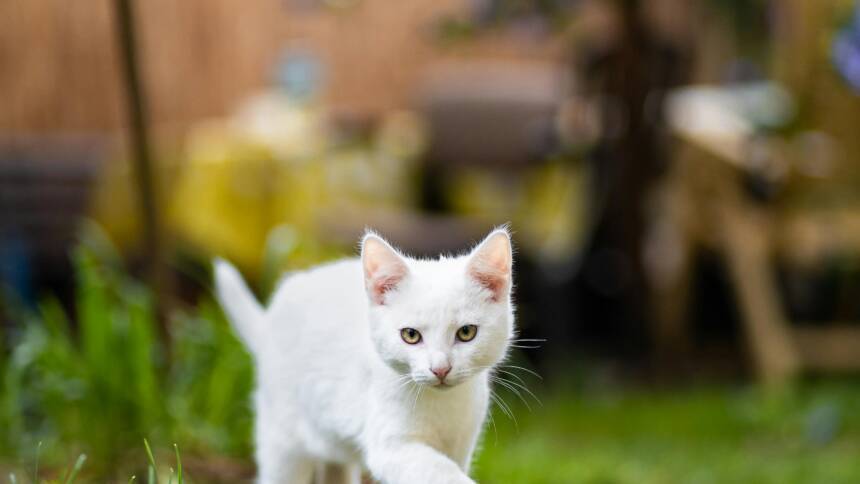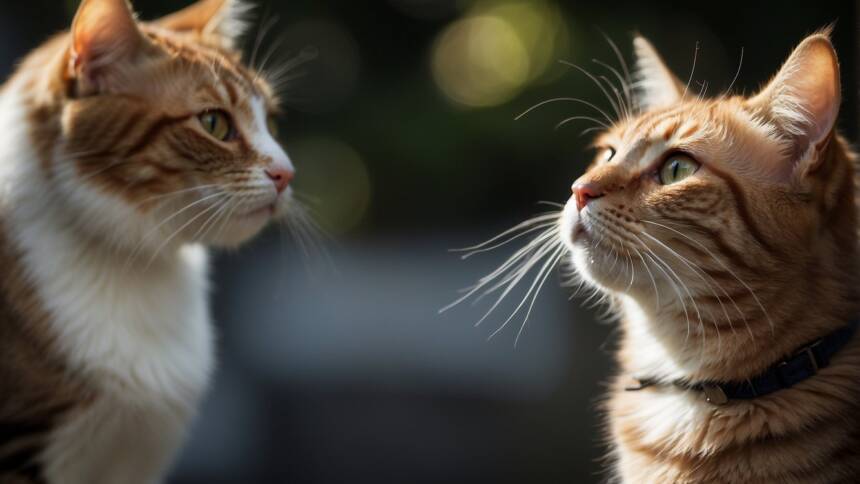Cat mounting behavior is often observed among domestic felines and is not solely limited to mating rituals. While this action is commonly associated with sexual maturity and the urge to mate in unneutered cats, neutered cats may also display this behavior. Mounting can be a multifaceted behavior stemming from various causes besides reproductive instincts, such as seeking attention, playing, establishing social hierarchy, or as a response to stress.
In neutered cats, the persistence of mounting actions can sometimes be perplexing to owners. Although neutering typically curtails sexually driven behaviors by removing the primary source of testosterone, it may not eliminate such behaviors entirely. Post-neutering, some cats might still exhibit mounting due to residual hormones in their system, which can take several weeks to fully dissipate. Additionally, mounting can become a learned behavior or a psychological response to environmental stresses such as changes in the home, new pets, or other disruptions to the cat’s routine.
Understanding Cat Mounting Behavior
Mounting behavior in cats is a complex interaction that often involves hormones and can be influenced by several factors, such as anxiety, stress, or the establishment of social hierarchies. It’s important to distinguish between sexual behavior and other motivations behind this activity.
Defining Mounting Behavior
Mounting, sometimes known as humping, is a physical action in which one cat climbs onto the back of another cat, usually gripping firmly with its paws and sometimes biting the neck or shoulder area. It is a behavioral pattern that can be observed in both male and female cats, and it’s not exclusive to any specific age group, as kittens as young as four months may exhibit this behavior.
The Role of Hormones in Mounting
The presence of sex hormones, particularly testosterone, plays a significant role in mounting behavior, which is often linked to a cat’s sexual instincts. However, even neutered cats, which have reduced levels of testosterone, may display mounting as it can serve purposes beyond reproduction:
- Stress and Anxiety Relief: Mounting can be a self-soothing action that cats use to cope with changes in their environment or other stressors.
- Dominance Expression: Cats use mounting behavior to assert dominance within a social group, which can help establish or maintain a hierarchy.
By understanding these aspects, cat owners can better interpret their pets’ actions and respond appropriately to manage and modify undesirable behavior.
The Influence of Neutering on Behaviors
Neutering can significantly alter behaviors associated with mating and aggression in cats. This section discusses specific behavioral changes observed following neutering and considers the impact of the timing of the neuter surgery on feline behavior.
Behavioral Changes After Neutering
After neutering, which involves the removal of a cat’s testicles, there is a notable decrease in hormone-driven behaviors. Neutered cats typically exhibit reductions in:
- Mounting: Sexual behavior, such as humping, is largely diminished.
- Territorial Marking: Urine spraying for territorial purposes often decreases.
- Aggression: Instances of aggressive behavior can be less frequent.
Cats that have undergone castration may also exhibit a decrease in roaming behavior and show less interest in seeking out females in heat. Consequently, neutered cats are often found to be calmer and less prone to stress-related behaviors.
Timing of Neuter Surgery and Behavior
The timing of neuter surgery can be a critical factor in the extent of behavioral changes observed. Neutering at an early age often prevents the development of undesired sexual behaviors, whereas late neutering might not completely eliminate these habits if they have already become ingrained. It’s important to consider that:
| Age of Neutering | Potential Behavioral Impact |
|---|---|
| Early (before 6 months) | Prevents the onset of most sexual and aggressive behaviors |
| Late (after sexual maturity) | May reduce, but not fully eliminate, established behaviors |
Early neutering is generally recommended to achieve the most significant impact on reducing hormone-related behaviors. However, even cats neutered later in life can experience a marked improvement in their behavior, contributing to a more harmonious household and reducing the likelihood of problematic interactions.
Social and Environmental Factors
Cat mounting behavior is complex and often influenced by social dynamics like territory and dominance, especially in the presence of other cats. Recognizing these factors can be key to understanding and managing interactions within a multi-cat household.
Territory and Dominance
Cats are territorial animals, and males are more prone to display dominance, particularly in the presence of female cats. Mounting can be a behavioral manifestation of asserting control over a territory. In a multi-cat household, this can lead to conflicts if boundaries are not clear or respected.
- Territory: Defined areas that cats perceive as their own space.
- Evident through behaviors like rubbing, scratching, and urine marking.
- Dominance: The establishment of a social hierarchy among cats.
- Male cats often mount to display dominance over one another, asserting their place in the hierarchy.
Interaction with Other Cats
The way cats interact with each other also significantly shapes their behavior, including mounting. Even in a domestic setting, a social hierarchy occurs where some cats are dominant over others.
- Social hierarchy influences:
- Access to resources like food, toys, and attention.
- Relationships between cats, contributing to either peaceful coexistence or friction.
- Multi-cat household dynamics:
- Established hierarchies can be disrupted by the introduction of new cats.
- Existing cats may exhibit mounting as a way to reinforce the social order.
Stress, Anxiety, and Coping Mechanisms
Recognizing stress and anxiety in cats is crucial as these emotional states can lead to various behaviors including mounting. Understanding and addressing these behaviors is imperative for a cat’s well-being.
Identifying Stress and Anxiety
Stress in cats can manifest as changes in behavior or physiology, often precipitated by environmental factors or disruptions to routine. Anxiety is characterized by prolonged states of distress, and if left unaddressed, may progress into chronic conditions that can compromise immune functioning and lead to disease. Signs of stress and anxiety to look for include:
- Changes in litter box habits
- Excessive grooming or other repetitive behaviors
- Vocalization changes
- Hiding or avoiding social interaction
Stress and anxiety are not just behavioral issues; they can exacerbate physical conditions like urinary tract infections.
Coping Behaviors in Cats
Cats cope with stress and anxiety through various behaviors. Mounting can be one such behavior, often misunderstood as sexual despite the cat being neutered. It can stem from a need for mental stimulation, an expression of dominance, or as a reaction to environmental stressors. Besides mounting, other coping strategies include:
- Scratching or kneading
- Purring or head-bumping
- Seeking solitude or perching in high places
Interventions such as pheromone diffusers which simulate calming natural chemicals can aid in alleviating stress, thus modifying undesirable coping behaviors. Providing ample environmental enrichment and interactive play can enhance mental stimulation, making cats less likely to engage in stress-related behaviors.
Behavioral and Medical Problems
Mounting behavior in cats can sometimes be a symptom of underlying medical or behavioral issues. Recognizing problematic mounting and identifying associated health concerns are critical in ensuring the well-being of felines.
Spotting Problematic Mounting
Problematic mounting in cats may manifest in various forms. Neutered male cats might still engage in this behavior due to non-sexual motivations such as stress, environmental changes, or social dynamics. It is essential to observe the context and frequency of the mounting to determine if it deviates from normal behavior.
Signs of Problematic Mounting:
- Excessive mounting of objects or other animals
- Persistence despite negative feedback from other cats or humans
- Mounting paired with other signs of distress or behavioral changes
Health Issues Related to Mounting
While mounting can be a behavioral problem, it may also be indicative of health issues. Neutered male cats are less likely to mount due to sexual reasons; however, when they do, it can be a signal of medical concerns like:
- Urinary Tract Infections (UTIs): Discomfort from UTIs can result in mounting and other atypical behaviors.
- Adrenocortical Tumors: These can lead to increased production of sex hormones, even in neutered cats, possibly causing mounting.
Medical problems potentially linked to mounting:
- Pain or discomfort
- Endocrine disorders
- Neurological conditions
Recognition of these issues warrants a thorough veterinary examination to determine the cause and appropriate treatment.
Enhancing the Indoor Environment
Creating an enriching indoor environment is crucial for a cat’s physical and mental well-being, addressing boredom and promoting exercise through play and appropriate resources.
Enrichment Through Play
To combat boredom and encourage regular exercise, it is essential to provide a variety of toys that cater to a cat’s instinctual need to hunt and play. Interactive toys such as laser pointers, feather wands, and mouse toys can simulate the thrill of the hunt. These should be rotated regularly to maintain the cat’s interest. Incorporating play sessions twice daily can greatly enhance a cat’s mood and activity levels, reducing the potential for weight gain and behavioral issues.
Providing Adequate Resources
Cats have an innate desire to explore and climb, making vertical space like cat trees or shelves an important aspect of an enriched environment. The provision of multiple scratching posts, preferably in different textures like sisal or cardboard, allows for essential claw maintenance and territorial marking. Additionally, a clean litter box located in a quiet, easily accessible space promotes comfort and sanitation. For those with access to a safe outdoor space, a catio can offer a stimulating environment while keeping the cat secure.
Training and Positive Behavior Reinforcement
When addressing cat mounting behavior, a structured approach that integrates consistent training routines and positive reinforcement techniques can be highly effective.
Establishing Routines and Training
To mitigate mounting behavior in cats, which can often be driven by play or dominance, establishing a daily routine is crucial. Consistent schedules for play, feeding, and interaction help set clear expectations for the cat. For training, one should introduce activities that fulfill the cat’s need for play and dominance in less disruptive ways. Introducing targeted play sessions with toys that simulate prey, such as feathers on a string, can satisfy a cat’s hunting instincts and reduce the likelihood of unwanted mounting behavior.
Routine Schedule Example:
- Morning: Interactive play session with toys
- Midday: Quiet time or solo play with puzzle feeders
- Evening: Training session using positive reinforcement
Using Positive Reinforcement Techniques
Positive reinforcement involves rewarding the cat for displaying desirable behaviors, thereby increasing the likelihood of these behaviors being repeated. When a cat is rewarded with treats, praise, or playtime, it begins to associate these positive outcomes with the absence of mounting. To effectively use positive reinforcement:
- Identify the behavior you wish to encourage.
- Choose a reward (treats, play, affection) that is highly motivating for the cat.
- Administer the reward immediately after the desired behavior occurs.
- Use a marker signal (like a clicker or a specific word) to pinpoint the exact behavior being rewarded.
To distract from mounting, one might train the cat to perform an alternative behavior. For example, “sit” or “high-five” can be reinforced as incompatible behaviors that redirect the cat’s attention and energy away from mounting.
Distraction Technique:
- Trigger Identified: Cat begins to show signs of mounting behavior.
- Action: Distract with an alternative command, such as ‘sit’.
- Reward: Treat or affection is given immediately upon compliance.
By combining established routines with the strategic use of positive reinforcement, cat owners can effectively teach their cats to channel their energy into acceptable behaviors, reducing instances of mounting.
